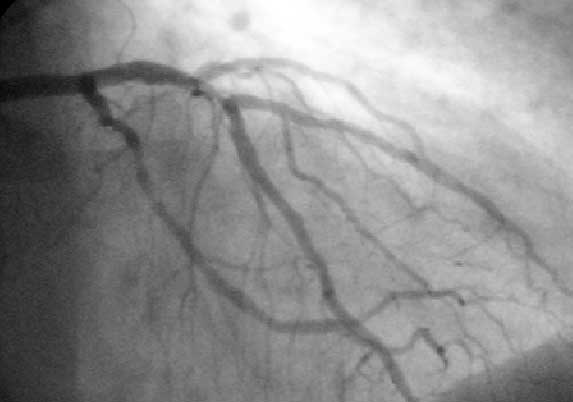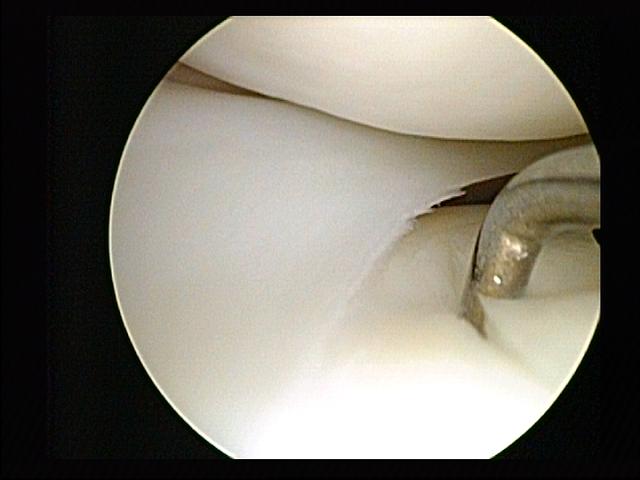|
Thomas J. Fogarty
Dr. Thomas J. "Tom" Fogarty (born February 25, 1934, in Cincinnati, Ohio) is an American surgeon and medical device inventor. He is best known for the invention of the embolectomy catheter (or balloon catheter), which revolutionized the treatment of blood clots (embolus). In 2008, Fogarty was elected a member of the National Academy of Engineering for invention of the balloon catheter and devices that have revolutionized vascular surgery, and for creating companies to commercialize these inventions. Early life and education Fogarty was born in Cincinnati, Ohio, on February 25, 1934. His father worked as a railroad engineer, but died when Fogarty was eight years old. He was born into an Irish-Catholic family. Fogarty cites his father's absence as being influential in his own creative nature as an inventor. He fixed things that needed to be fixed for his mother, and he worked with soapbox derby cars and model airplanes. "I just had a natural inclination and inquisitive nature ... [...More Info...] [...Related Items...] OR: [Wikipedia] [Google] [Baidu] |
Cincinnati, Ohio
Cincinnati ( ; colloquially nicknamed Cincy) is a city in Hamilton County, Ohio, United States, and its county seat. Settled in 1788, the city is located on the northern side of the confluence of the Licking River (Kentucky), Licking and Ohio River, Ohio rivers, the latter of which marks the state line with Kentucky. It is the List of cities in Ohio, third-most populous city in Ohio and List of united states cities by population, 66th-most populous in the U.S., with a population of 309,317 at the 2020 census. The city is the economic and cultural hub of the Cincinnati metropolitan area, Ohio's most populous metro area and the Metropolitan statistical area, nation's 30th-largest, with over 2.3 million residents. Throughout much of the 19th century, Cincinnati was among the Largest cities in the United States by population by decade, top 10 U.S. cities by population. The city developed as a port, river town for cargo shipping by steamboats, located at the crossroads of the Nor ... [...More Info...] [...Related Items...] OR: [Wikipedia] [Google] [Baidu] |
Portland, Oregon
Portland ( ) is the List of cities in Oregon, most populous city in the U.S. state of Oregon, located in the Pacific Northwest region. Situated close to northwest Oregon at the confluence of the Willamette River, Willamette and Columbia River, Columbia rivers, it is the county seat of Multnomah County, Oregon, Multnomah County, Oregon's most populous county. Portland's population was 652,503, making it the List of United States cities by population, 28th most populous city in the United States, the sixth most populous on the West Coast of the United States, West Coast, and the third most populous in the Pacific Northwest after Seattle and Vancouver. Approximately 2.5 million people live in the Portland metropolitan area, Oregon, Portland metropolitan area, making it the List of metropolitan statistical areas, 26th most populous in the United States. Almost half of Oregon's population resides within the Portland metro area. Named after Portland, Maine, which is itself named aft ... [...More Info...] [...Related Items...] OR: [Wikipedia] [Google] [Baidu] |
Angioplasty
Angioplasty, also known as balloon angioplasty and percutaneous transluminal angioplasty, is a minimally invasive procedure, minimally invasive endovascular surgery, endovascular Medical procedure, procedure used to widen narrowed or obstructed arteries or veins, typically to treat arterial atherosclerosis. A deflated balloon attached to a catheter (a balloon catheter) is passed over a guide-wire into the stenosis, narrowed blood vessel, vessel and then inflated to a fixed size. The balloon forces expansion of the blood vessel and the surrounding muscular wall, allowing an improved blood flow. A stent may be inserted at the time of ballooning to ensure the vessel remains open, and the balloon is then deflated and withdrawn. Angioplasty has come to include all manner of Blood vessel, vascular interventions that are typically performed percutaneously. Uses and indications Coronary angioplasty A coronary angioplasty is a therapeutic procedure to treat the stenotic (narrow ... [...More Info...] [...Related Items...] OR: [Wikipedia] [Google] [Baidu] |
Irvine, California
Irvine () is a Planned community, planned city in central Orange County, California, United States, in the Los Angeles metropolitan area. It was named in 1888 for the landowner James Irvine. The Irvine Company started developing the area in the 1960s and the city was formally incorporated on December 28, 1971. The city had a population of 318,629 as of June 2025. As of 2025, it is the third most populous city in Orange County, fifth most in the Greater Los Angeles region, and List of United States cities by population, 72th most in the United States. A number of corporations, particularly in the technology and semiconductor sectors, have their national or international headquarters in Irvine. Irvine is also home to several higher-education institutions including the University of California, Irvine (UCI), Concordia University Irvine, Concordia University, Irvine Valley College, and campuses of University of La Verne and Pepperdine University. History Kizh era Gabrieleño in ... [...More Info...] [...Related Items...] OR: [Wikipedia] [Google] [Baidu] |
Minimally Invasive
Minimally invasive procedures (also known as minimally invasive surgeries) encompass surgical techniques that limit the size of incisions needed, thereby reducing wound healing time, associated pain, and risk of infection. Surgery by definition is invasive, and many operations requiring incisions of some size are referred to as ''open surgery''. Incisions made during open surgery can sometimes leave large wounds that may be painful and take a long time to heal. Advancements in medical technologies have enabled the development and regular use of minimally invasive procedures. For example, endovascular aneurysm repair, a minimally invasive surgery, has become the most common method of repairing abdominal aortic aneurysms in the US as of 2003. The procedure involves much smaller incisions than the corresponding open surgery procedure of open aortic surgery. Interventional radiologists were the forerunners of minimally invasive procedures. Using imaging techniques, radiologist ... [...More Info...] [...Related Items...] OR: [Wikipedia] [Google] [Baidu] |
Jell-o
Jell-O (stylized in all caps) is an American brand offering a variety of powdered gelatin dessert (fruit-flavored gels/jellies), pudding, and no-bake cream pie mixes. The original gelatin dessert ( genericized as jello) is the signature of the brand. "Jell-O" is a registered trademark of Kraft Heinz, and is based in Chicago, Illinois. The dessert was especially popular in the first half of the 20th century. The original gelatin dessert began in Le Roy, New York, in 1897, when Pearle Bixby Wait trademarked the name ''Jell-O''. He and his wife May had made the product by adding strawberry, raspberry, orange, and lemon flavoring to sugar and granulated gelatin (which had been patented in 1845). The powder is mixed with boiling water and then cooled to produce a gel. Description Jell-O is sold prepared (ready-to-eat), or in powder form, and is available in various colors and flavors. The powder contains powdered gelatin and flavorings, including sugar or artificial sweetener ... [...More Info...] [...Related Items...] OR: [Wikipedia] [Google] [Baidu] |
Polyvinyl Chloride
Polyvinyl chloride (alternatively: poly(vinyl chloride), colloquial: vinyl or polyvinyl; abbreviated: PVC) is the world's third-most widely produced synthetic polymer of plastic (after polyethylene and polypropylene). About 40 million tons of PVC are produced each year. PVC comes in rigid (sometimes abbreviated as RPVC) and flexible forms. Rigid PVC is used in construction for pipes, doors and windows. It is also used in making plastic bottles, packaging, and bank or membership cards. Adding plasticizers makes PVC softer and more flexible. It is used in plumbing, electrical cable insulation, flooring, signage, phonograph records, inflatable products, and in rubber substitutes. With cotton or linen, it is used in the production of canvas. Polyvinyl chloride is a white, brittle solid. It is soluble in ketones, chlorinated solvents, dimethylformamide, THF and DMAc. Discovery PVC was synthesized in 1872 by German chemist Eugen Baumann after extended investigation and experimenta ... [...More Info...] [...Related Items...] OR: [Wikipedia] [Google] [Baidu] |
Syringe
A syringe is a simple reciprocating pump consisting of a plunger (though in modern syringes, it is actually a piston) that fits tightly within a cylindrical tube called a barrel. The plunger can be linearly pulled and pushed along the inside of the tube, allowing the syringe to take in and expel liquid or gas through a discharge orifice at the front (open) end of the tube. The open end of the syringe may be fitted with a hypodermic needle, a nozzle or tubing to direct the flow into and out of the barrel. Syringes are frequently used in clinical medicine to administer injections, infuse intravenous therapy into the bloodstream, apply compounds such as glue or lubricant, and draw/measure liquids. There are also prefilled syringes (disposable syringes marketed with liquid inside). The word "syringe" is derived from the Greek σῦριγξ ('' syrinx'', meaning "Pan flute", "tube"). Medical syringes Medical syringes include disposable and safety syringes, injectio ... [...More Info...] [...Related Items...] OR: [Wikipedia] [Google] [Baidu] |
Saline (medicine)
Saline (also known as saline solution) is a mixture of sodium chloride (salt) and water. It has a number of uses in medicine including cleaning wounds, removal and storage of contact lenses, and help with dry eyes. By injection into a vein, it is used to treat hypovolemia such as that from gastroenteritis and diabetic ketoacidosis. Large amounts may result in fluid overload, swelling, acidosis, and high blood sodium. In those with long-standing low blood sodium, excessive use may result in osmotic demyelination syndrome. Saline is in the crystalloid family of medications. It is most commonly used as a sterile 9 g of salt per litre (0.9%) solution, known as ''normal saline''. Higher and lower concentrations may also occasionally be used. Saline is acidic, with a pH of 5.5 (due mainly to dissolved carbon dioxide). The medical use of saline began around 1831. It is on the World Health Organization's List of Essential Medicines. In 2022, sodium salts was the 2 ... [...More Info...] [...Related Items...] OR: [Wikipedia] [Google] [Baidu] |
Latex Glove
Medical gloves are disposable gloves used during medical examinations and procedures to help prevent cross-contamination between caregivers and patients. Medical gloves are made of different polymers including latex, nitrile rubber, polyvinyl chloride and neoprene; they come unpowdered, or powdered with corn starch to lubricate the gloves, making them easier to put on the hands. Corn starch replaced tissue-irritating lycopodium powder and talc, but even corn starch can impede healing if it gets into tissues (as during surgery). As such, unpowdered gloves are used more often during surgery and other sensitive procedures. Special manufacturing processes are used to compensate for the lack of powder. There are two main types of medical gloves: examination and surgical. Surgical gloves have more precise sizing with a better precision and sensitivity and are made to a higher standard. Examination gloves are available either sterile or non-sterile, while surgical gloves are generally ... [...More Info...] [...Related Items...] OR: [Wikipedia] [Google] [Baidu] |
Catheter
In medicine, a catheter ( ) is a thin tubing (material), tube made from medical grade materials serving a broad range of functions. Catheters are medical devices that can be inserted in the body to treat diseases or perform a surgical procedure. Catheters are manufactured for specific applications, such as cardiovascular, urological, gastrointestinal, neurovascular and ophthalmic procedures. The process of inserting a catheter is called ''catheterization''. In most uses, a catheter is a thin, flexible tube (''soft'' catheter) though catheters are available in varying levels of stiffness depending on the application. A catheter left inside the body, either temporarily or permanently, may be referred to as an "indwelling catheter" (for example, a peripherally inserted central catheter). A permanently inserted catheter may be referred to as a "permcath" (originally a trademark). Catheters can be inserted into a body cavity, duct, or vessel, brain, skin or adipose tissue. Functional ... [...More Info...] [...Related Items...] OR: [Wikipedia] [Google] [Baidu] |
Urethra
The urethra (: urethras or urethrae) is the tube that connects the urinary bladder to the urinary meatus, through which Placentalia, placental mammals Urination, urinate and Ejaculation, ejaculate. The external urethral sphincter is a striated muscle that allows voluntary control over urination. The Internal urethral sphincter, internal sphincter, formed by the involuntary smooth muscles lining the bladder neck and urethra, receives its nerve supply by the Sympathetic nervous system, sympathetic division of the autonomic nervous system. The internal sphincter is present both in males and females. Structure The urethra is a fibrous and muscular tube which connects the urinary bladder to the external urethral meatus. Its length differs between the sexes, because it passes through the penis in males. Male In the human male, the urethra is on average long and opens at the end of the external urethral meatus. The urethra is divided into four parts in men, named after the lo ... [...More Info...] [...Related Items...] OR: [Wikipedia] [Google] [Baidu] |









